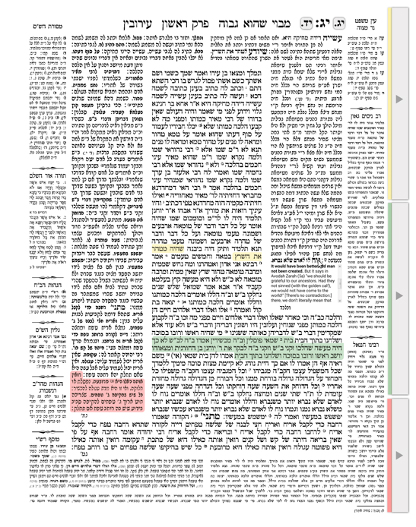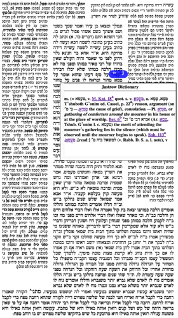A Digital Humanities Case Study

The goal of this lab is to use the Talmud as a primary example of using digital tools to provide new experiences and methods of engagement with traditionally-printed content that are not possible with printed texts.
The Talmud is a collection of religious works that represents the core canon of Jewish law, lore, and wisdom. It is studied by hundreds of thousands of people today around the world. Aside from constituting the standard curriculum for Jewish seminaries and yeshivot and the launching point for Jewish legal discussions, it is also studied by a growing number of layman and scholars alike in the ever-popular Daf Yomi (daily page) learning program.
The vast majority of this study is done through the printed text, paginated into 2,711 folios. The page has a distinct and standardized visual form (tzurat hadaf). It is this unique—and culturally revered—form, which visually relates commentaries, related texts, and references, as well as the inherent hypertextuality of the main text, that makes the Talmud a compelling case study for the enhancement that digital affordances can provide.
With the rise of web technologies in the 21st century, various digital platforms have come about, providing tools such as translation and easy-access to external sources. These projects are used widely, but we believe there is much improvement to be made.
While the largest free projects (Sefaria and AlHatorah, for instance) allow access to the text of the Talmud and its commentaries for free, they do not provide the classic and integrative visual form of the Talmud. This visual form has great historical, cultural, and pragmatic significance, and we believe that it has been and will continue to be important for beginner and advanced users alike. We wish to emulate more of the print-based experience online, while taking advantage of the unique digital affordances of the web to provide accessibility and enhancement tools. Thus, we will continue to make learning online an attractive and expansive option without sacrificing the standardized and familiar tzurat hadaf.
The few projects that do seek to implement the tzurat hadaf using web technologies are not open source, and thus their digital tooling ends with their specific implementation. In addition to our prototypes, we wish to provide an open-source base that others can build upon, adding to the small-but-growing library of tools and platforms that are available for digital Talmud. It has been noted that the daf did not start with the Talmud—the format of main text and wrap-around commentaries has been used in both Latin and Hebrew Bibles, as well as canon law—and it does not need to end with it. Our generalized framework will enable new uses for the daf, including and beyond the Talmud.

Our goal this semester is (1) to develop a Javascript framework that will allow anyone to render a daf or daf-like page on the web and (2) to use that framework to build a prototype for an interactive Talmud learning platform. The framework will render the static daf using web technologies. Then, for the prototype we will build upon that to develop new features uniquely enabled by the digital, interactive medium of the web.
So far, we have begun the development of the open source package allowing anyone to create daf-like media on the Web, and we’ve also made significant progress creating the algorithm that renders Talmud pages automatically. We’ve also designed and begun development on various translation and notetaking tools that enhance the study of the Talmud using the digital affordances of the Web.
By the end of the Spring semester, we will present a fully interactive demo as well as a prototype to demonstrate the ideal use case of our software. If we are approved for the fall, we plan to create modern commentary glosses that aggregate recent English-speaking Talmud scholars.
We've published an open source library.
